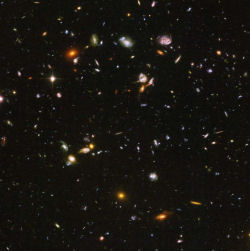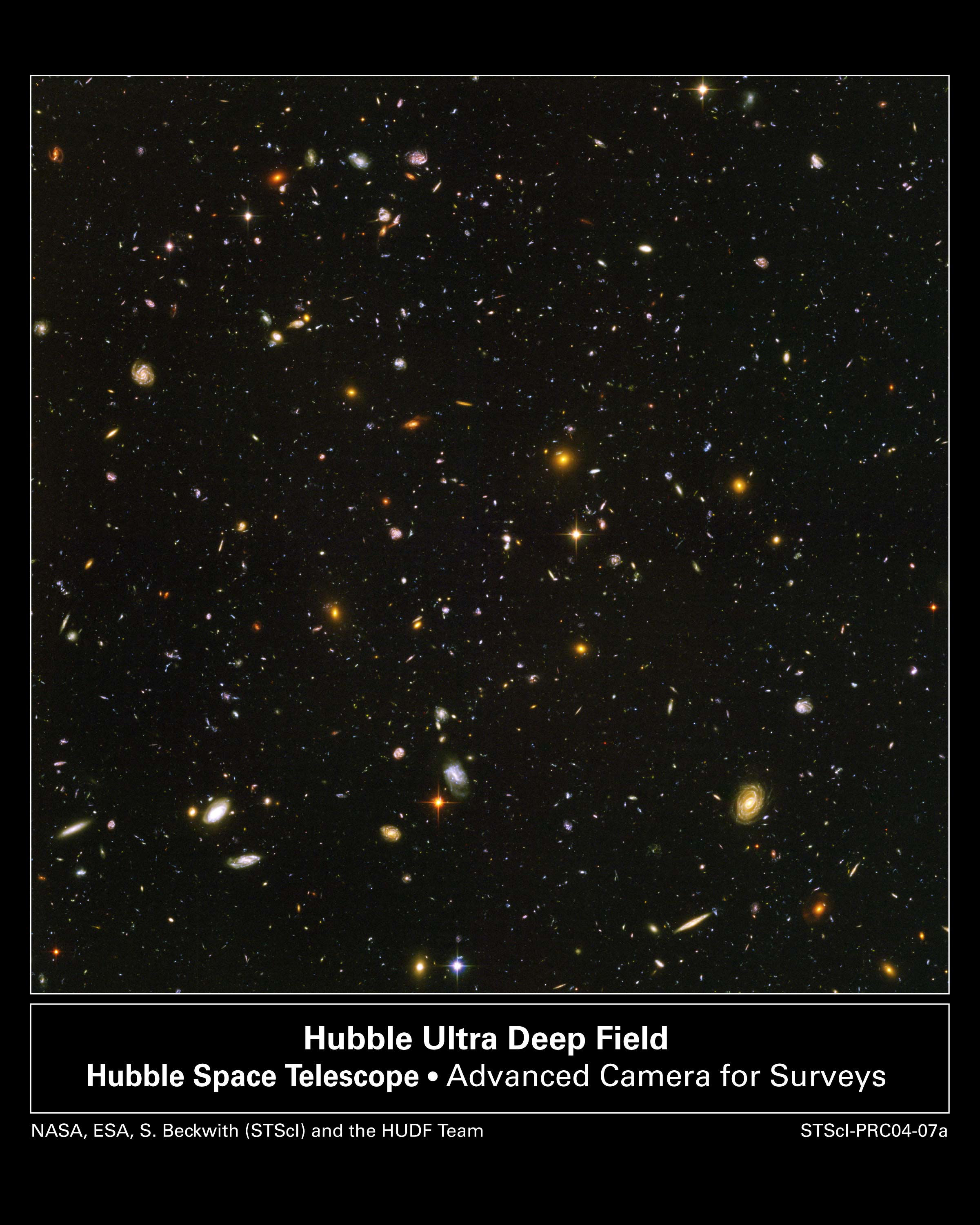Ginormous Neutrino
We think of fundamental particles as being very small, but “relic” neutrinos left over from the big bang could be big. Really big. According to the 22 May Physical Review Letters, the quantum wave describing one could be billions of light-years across, a good fraction of the observable universe. Such a large wave raises questions about how a quantum particle interacts with gravity at the scale of galaxies and galaxy clusters–questions that remain unresolved.
Relic neutrinos, like the relic photons that make up the cosmic microwave background, are leftovers from the hot, crowded universe that prevailed 13.7 billion years ago. Even though the particle density has greatly decreased as the universe expanded, there are still roughly 300 relic neutrinos per cubic centimeter, nearly as many as the number of relic photons. The average energy has also decreased over time to such a low value that relic neutrinos are completely undetectable in earthly detectors.
Neutrinos oscillate among three “flavors” as they move through space, and each flavor state is a combination of three so-called mass states. The precise masses of these states are not yet known, but researchers have established some limits on them. The mass states are something like “primary colors”–a palette out of which all neutrino states are made. George Fuller of the University of California, San Diego, and his student Chad Kishimoto wanted to check whether a theoretical upper limit placed on the neutrino masses based on galaxy observations would be affected by accounting for flavor oscillation. The answer was no, at least for the level of precision available with current observations.
But in doing their derivation, the researchers realized that the relic neutrino wave functions–the waves that describe the possible locations of quantum particles until they interact with something–might extend billions of light years. Half of a neutrino’s wave function could, for instance, be in our galaxy while the other half would be out at the edge of the observable universe. This stretching comes from the combination of mass states that makes up each neutrino. Each mass state on its own would travel at a different speed, with the heaviest traveling the slowest. At ordinary neutrino energies these speeds are all very close to the speed of light. But relic neutrinos have very low energy–so low that the intrinsic speed of the heaviest mass state could be much less than the speed of light, while that of the other two could still be close to the speed of light.
But then, what happens when the neutrino travels through a dense galaxy and has slowed enough to be captured by the gravitational field? In textbook quantum mechanics, a particle’s spread-out wave function “collapses” to a single location when its position is measured. Being confined in a single galaxy could correspond to such a “measurement,” of the neutrino, write Fuller and Kishimoto. But with a wave function extending so far in space–and therefore back in time–it’s not clear how or whether the collapse would happen. The wave function may simply become distorted by the space-time curvature of the galaxy. The team says a proper answer might require a complete, relativistic calculation involving the entire history of neutrinos interacting with all of the matter in the universe. The manner of gravitational collapse of wave functions is still an open debate [1] they say.
Akif Baha Balantekin of the University of Wisconsin in Madison says the paper contains practical results that will help researchers use both cosmological observations and neutrino detector data to better understand neutrinos. Regarding the large wave functions, he says, “It’s fascinating to think that a quantum coherence [wave function] could survive the age of the universe.”
–Michael Schirber
Michael Schirber is a Corresponding Editor for Physics Magazine based in Lyon, France.
References
- J. Christian, “Testing Gravity-Driven Collapse of the Wave Function via Cosmogenic Neutrinos,” Phys. Rev. Lett. 95, 160403 (2005)
More Information
Focus stories:
Nobel Focus: Neutrino and X-ray Vision (2002) Galaxies Help Weigh Neutrinos (2002) Neutrinos Have Mass (1998)





